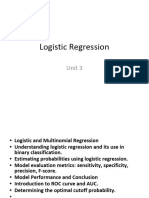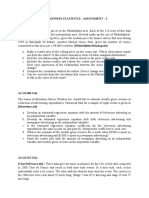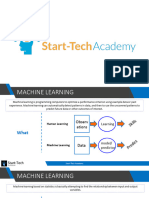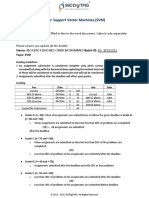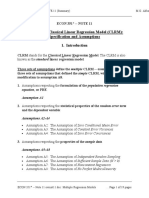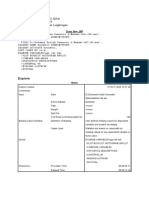0% found this document useful (0 votes)
5 views24 pagesModule1.4 Regression
The document outlines the course CSA3002 on Machine Learning Algorithms, focusing on supervised learning techniques such as regression analysis. It covers key concepts including linear and logistic regression, their applications, and the importance of understanding dependent and independent variables. The course aims to equip students with practical skills in applying machine learning models to solve real-world problems.
Uploaded by
kavyaCopyright
© © All Rights Reserved
We take content rights seriously. If you suspect this is your content, claim it here.
Available Formats
Download as PPTX, PDF, TXT or read online on Scribd
0% found this document useful (0 votes)
5 views24 pagesModule1.4 Regression
The document outlines the course CSA3002 on Machine Learning Algorithms, focusing on supervised learning techniques such as regression analysis. It covers key concepts including linear and logistic regression, their applications, and the importance of understanding dependent and independent variables. The course aims to equip students with practical skills in applying machine learning models to solve real-world problems.
Uploaded by
kavyaCopyright
© © All Rights Reserved
We take content rights seriously. If you suspect this is your content, claim it here.
Available Formats
Download as PPTX, PDF, TXT or read online on Scribd
/ 24







